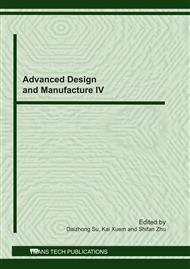p.197
p.201
p.205
p.209
p.213
p.217
p.221
p.225
p.229
Prediction of Wrinkling and Bursting in Hydroforming of Tubes in Box-Shaped Die Using FEM
Abstract:
In recent years, tube hydroforming has been considered by automobile and airplane industries, because it decreases weight and increases solidity of parts. For this reason, technical knowledge for manufacturing with better quality and accuracy has been developing. However, there are some probable defects in forming by hydroforming technique, which are bursting and wrinkling caused by improper loading paths. Therefore, it is very important to apply a proper path pressure proportional to axial feeding. In this research, firstly, tube hydroforming in a box-shaped die has been simulated by means of 3-D FEM in explicit dynamic software ABAQUSE 6.9-1. For prediction of these occurrences, different paths of pressure have been analyzed and then by comparison with obtained results from the simulation performed such as thickness distribution and final form of the tube, the range of pressure and axial feeding have been predicted. Accordingly, optimal range and loading path for hydroforming of box-shaped part without failure is determined. Considering the working conditions related to the same experimental tests and comparing these conditions with simulated results, efficiency and accuracy of the proposed method have been also investigated.
Info:
Periodical:
Pages:
213-216
Citation:
Online since:
July 2011
Keywords:
Price:
Сopyright:
© 2011 Trans Tech Publications Ltd. All Rights Reserved
Share:
Citation:


